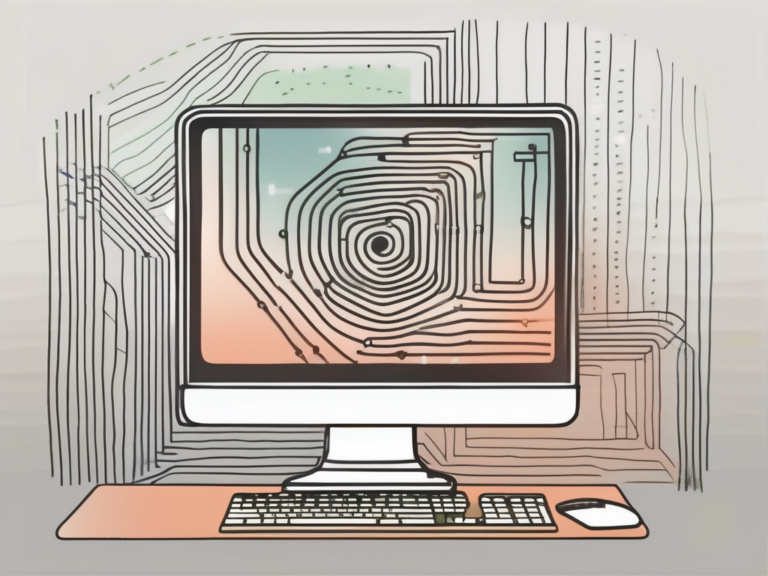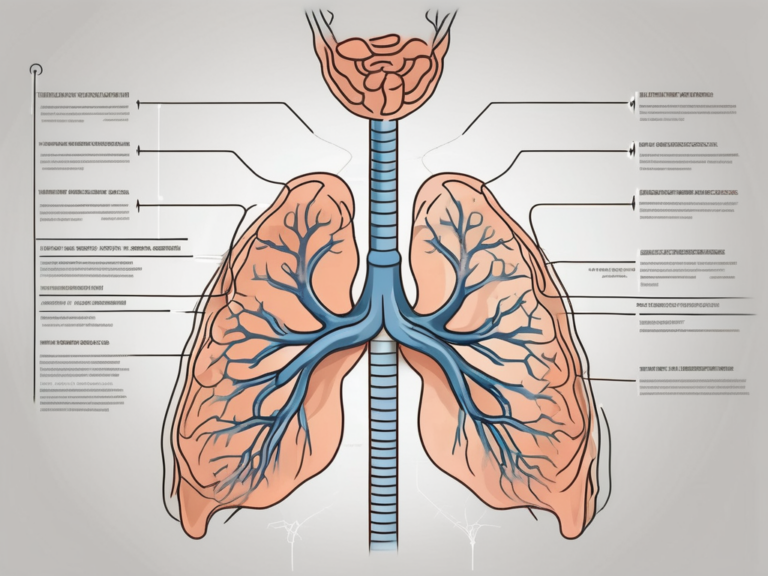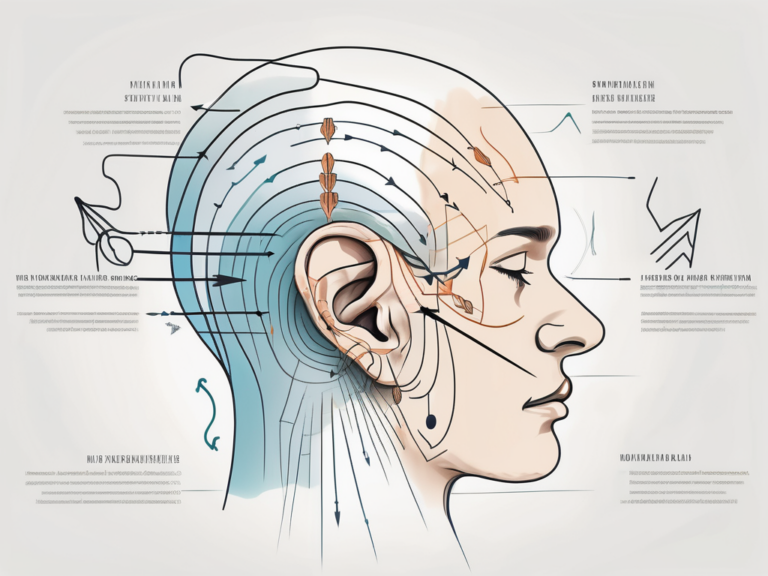How Do Recursive Functions Work?
Recursive functions are a fundamental concept in computer science and programming. They provide a way to solve complex problems by breaking them down into smaller, more manageable pieces. By repeatedly calling themselves, recursive functions can iterate through these smaller pieces, ultimately leading to a solution.
Understanding the Concept of Recursion
In order to fully comprehend how recursive functions work, it is vital to understand the concept of recursion itself. At its core, recursion involves a function calling itself, either directly or indirectly, during its execution. This self-referential behavior allows for a structured approach to problem-solving.
In the context of programming, recursion provides a mechanism for solving problems that can be broken down into smaller, identical problems. By solving the base case or base cases, which represent the simplest instances of the problem, and combining the results of recursive calls, the function can solve the problem as a whole.
Defining Recursion in Programming
In programming, recursion is a technique where a function calls itself to solve a problem by breaking it down into subproblems. These subproblems are typically smaller or simpler versions of the original problem. The process continues until a base case is reached, which represents the terminating condition for the recursion.
Recursive functions are defined in terms of their input arguments, the conditions under which the recursion stops (the base case), and the actions taken during each recursive call (the recursive case). Understanding these components is essential when delving into the inner workings of recursive functions.
The Role of Recursion in Problem Solving
Recursion plays a vital role in problem-solving due to its ability to break down complex problems into manageable parts. By employing recursive functions, programmers can tackle difficult problems by splitting them into smaller, more comprehensible subproblems.
Furthermore, recursive functions provide an elegant and concise way to express solutions to problems that exhibit a recursive nature. They allow for a clear representation of the problem’s structure through the interplay of base cases and recursive calls.
Moreover, recursion can often lead to more efficient and optimized code. By breaking down a problem into smaller subproblems, recursive functions can avoid redundant calculations and optimize the use of memory. This can result in faster execution times and improved performance.
Additionally, recursion is not limited to a specific programming language or domain. It is a fundamental concept that can be applied in various fields, including mathematics, computer science, and even everyday problem-solving. Understanding recursion opens up a world of possibilities for solving complex problems in a structured and elegant manner.
The Anatomy of a Recursive Function
Understanding the structure of a recursive function is key to grasping its inner workings. Recursive functions typically comprise of two main elements: the base case and the recursive case.
Base Case in Recursive Functions
The base case represents the simplest version of the problem that can be solved without further recursion. It serves as the stopping condition for the recursive calls. Once the base case is reached, the function returns a specific value or performs a specific action, and the recursion terminates.
For example, in a recursive function to calculate the factorial of a number, the base case could be defined as when the number equals 0 or 1. In this case, the function would return 1, effectively ending the recursive calls.
Understanding the base case is crucial as it allows the recursive function to break down the problem into smaller, more manageable subproblems. By defining the base case, the function knows when to stop the recursion and start returning the results.
Recursive Case in Recursive Functions
Contrary to the base case, the recursive case governs the behavior of the function when the base case is not yet satisfied. It defines the actions to be taken during each recursive call and how the results of the recursive calls are combined to solve the problem.
For instance, in a recursive function to calculate the Fibonacci sequence, the recursive case would involve calling the function with the previous two numbers to determine the next number. The function continues to make recursive calls until the base case is reached.
Understanding the recursive case is essential as it allows the function to break down the problem into smaller subproblems and combine the results to solve the larger problem. It is through the recursive case that the function builds upon itself, gradually solving the problem step by step.
By understanding both the base case and the recursive case, you can gain a deeper insight into the inner workings of recursive functions. It is through these two elements that recursive functions are able to solve complex problems by breaking them down into simpler, more manageable subproblems. So the next time you encounter a recursive function, remember to analyze its base case and recursive case to unravel its fascinating logic.
The Working Mechanism of Recursive Functions
To fully comprehend how recursive functions work, it is essential to understand the mechanisms that drive their execution, namely the call stack and memory management.
Recursive functions are a powerful tool in programming, allowing for elegant and concise solutions to complex problems. However, their inner workings can be quite intricate.
The Call Stack and Recursion
The call stack is a data structure used by programs to manage function calls. When a function is called, information about its execution, such as its arguments and variables, is stored on the call stack. This allows the program to keep track of the current function and resume execution after the function returns.
When a recursive function is called, it enters a recursive loop, repeatedly calling itself until a specific condition, known as the base case, is met. Each recursive call adds a new entry to the call stack, effectively creating a chain of function calls. As the recursive calls are made, the call stack grows in size.
As the recursive calls continue, the call stack becomes a vital component in the execution of the recursive function. It keeps track of the function calls and their respective states, ensuring that the program knows where to return to after each recursive call.
Memory Management in Recursive Functions
Recursive functions utilize memory in the form of the call stack, as mentioned earlier. It is important to consider memory management when working with recursive functions, as an excessive number of recursive calls can lead to stack overflow errors.
Additionally, recursive functions may require auxiliary memory, such as additional variables or data structures, to carry out their computations. These auxiliary memory resources are allocated and deallocated as the recursive calls are made and unwound.
Efficient memory management is crucial in recursive functions to prevent excessive consumption or unnecessary duplication of resources. By carefully managing memory usage, developers can ensure that recursive functions run smoothly and avoid any potential memory-related issues.
In conclusion, understanding the working mechanism of recursive functions involves grasping the concepts of the call stack and memory management. The call stack keeps track of function calls, while memory management ensures efficient allocation and deallocation of resources. By mastering these concepts, developers can harness the power of recursive functions to solve complex problems in an elegant and efficient manner.
Types of Recursive Functions
Recursive functions can be categorized into different types based on their behavior and patterns of recursion. Understanding these types can help developers choose the most appropriate approach for solving a problem.
Direct vs Indirect Recursive Functions
Direct recursive functions are those where a function calls itself directly during its execution. This type of recursion is straightforward and often exhibits a clear base case. For example, consider a factorial function that calculates the factorial of a given number. In this case, the function calls itself with a smaller input until it reaches the base case of 1. This direct recursion allows for a simple and efficient implementation of the factorial algorithm.
On the other hand, indirect recursive functions involve a chain of function calls, where one function calls another, and eventually, the last function calls the initial one, creating a cycle of recursion. This type of recursion can be more complex to understand and implement. An example of an indirect recursive function is the Fibonacci sequence, where each number is the sum of the two preceding ones. In this case, two functions are needed to calculate the Fibonacci sequence: one to calculate the current number and another to calculate the previous number. These functions call each other in a cycle, creating an indirect recursion.
Single vs Multiple Recursive Functions
Single recursive functions are those that make a single recursive call during their execution. They follow a linear pattern of recursion, where each recursive call leads to only one subsequent call until the base case is reached. This type of recursion is often used when solving problems that can be broken down into smaller subproblems. For example, a function that calculates the sum of all elements in an array can use a single recursive call to calculate the sum of the first n-1 elements and then add the nth element to the result. This linear pattern of recursion allows for an efficient and concise implementation of the algorithm.
Multiple recursive functions, also known as tree-like recursive functions, make multiple recursive calls during their execution. These functions create a branching pattern of recursion, where each recursive call results in multiple subsequent calls, potentially leading to a complex tree-like structure. This type of recursion is often used when solving problems that involve exploring multiple possibilities or combinations. For example, a function that generates all possible permutations of a given set of elements would require multiple recursive calls to generate each permutation. The branching pattern of recursion allows for an exhaustive exploration of all possible combinations.
Advantages and Disadvantages of Recursive Functions
Recursive functions come with advantages and disadvantages that need to be carefully considered when incorporating them into a program.
When to Use Recursive Functions
Recursive functions shine when solving problems that can be broken down into smaller subproblems. They offer a clean and concise way to express solutions for such problems. Recursive functions are particularly useful when dealing with tasks that exhibit a recursive nature or where the data structures themselves are recursive in nature.
Limitations of Recursive Functions
While recursive functions offer elegant solutions in many cases, they also come with limitations. Improper or excessive use of recursion can cause stack overflow errors, where the call stack exceeds its capacity. Recursive functions may also suffer from slower performance compared to iterative solutions, as each recursive call incurs the overhead of function calls and stack operations.
One advantage of recursive functions is their ability to handle complex problems by breaking them down into smaller, more manageable subproblems. This can lead to more efficient and organized code, as the recursive function can be written to handle the base case and then call itself with smaller inputs. This recursive approach allows for a more elegant and intuitive solution, especially when dealing with problems that naturally exhibit a recursive structure.
Another advantage of recursive functions is their ability to work well with recursive data structures. For example, when dealing with a linked list, a recursive function can easily traverse the list by calling itself on the next node. This recursive approach simplifies the code and makes it easier to understand and maintain. Recursive functions also allow for easier implementation of algorithms that involve tree structures, such as binary search trees or AVL trees.
Despite these advantages, recursive functions also have their limitations. One limitation is the potential for stack overflow errors. If a recursive function is not properly implemented or if it is called with a large input, it can cause the call stack to exceed its capacity. This can lead to program crashes and unexpected behavior. It is important to carefully design and test recursive functions to avoid such errors.
Another limitation of recursive functions is their potential for slower performance compared to iterative solutions. Each recursive call incurs the overhead of function calls and stack operations, which can add up and result in slower execution times. In some cases, an iterative solution may be more efficient and practical, especially when dealing with large inputs or time-sensitive applications.
Debugging Recursive Functions
Debugging recursive functions can sometimes be challenging due to their recursive nature. However, with the right approach, it is possible to identify and fix issues efficiently.
Common Errors in Recursive Functions
Common errors in recursive functions include incorrectly defined base cases, improperly defined or missing recursive calls, and incorrect handling of data structures or variables during recursion. These errors can lead to unexpected behavior and incorrect results.
One common error in recursive functions is the failure to properly update variables or data structures during each recursive call. For example, if a variable is not updated with the correct value at each step of the recursion, it can lead to incorrect results or an infinite loop. It is important to carefully track the state of variables and data structures throughout the recursion to ensure they are being modified correctly.
Tips for Debugging Recursive Functions
When debugging recursive functions, it is helpful to visualize the recursive calls and their execution using techniques such as debuggers or tracing. Additionally, examining the values of variables and arguments during each recursive call can offer valuable insights into the behavior of the function.
Another useful technique for debugging recursive functions is to add print statements or log messages at strategic points in the code. These statements can help track the flow of execution and provide information about the values of variables at different stages of the recursion. By carefully analyzing the output of these messages, it becomes easier to identify any inconsistencies or errors in the function’s behavior.
It is also crucial to carefully inspect the base case and recursive case, ensuring they are correctly defined and that all necessary operations are performed. Sometimes, a small oversight in the base case or recursive case can lead to unexpected behavior. By thoroughly reviewing these cases and verifying that they are implemented correctly, it becomes easier to pinpoint and resolve any issues in the recursive function.
Conclusion: Mastering Recursive Functions
Recursive functions provide a powerful tool for solving complex problems by breaking them down into smaller, more manageable pieces. By understanding the concept of recursion, the structure of recursive functions, and their working mechanisms, programmers can leverage recursion to design elegant and efficient solutions.
Key Takeaways on Recursive Functions
- Recursive functions solve problems by breaking them down into smaller, identical subproblems.
- Recursive functions consist of base cases and recursive cases, which define the stopping condition and the behavior during recursion.
- The call stack manages the execution of recursive functions, while memory management is crucial to prevent stack overflow errors.
- Recursive functions can be direct or indirect, single or multiple, depending on the pattern of recursion.
- Recursive functions offer advantages in problem-solving but also come with limitations and potential performance trade-offs.
Further Reading and Resources on Recursive Functions
For further exploration of recursive functions and their applications, the following resources are highly recommended:
- “Introduction to Algorithms” by Thomas H. Cormen, Charles E. Leiserson, Ronald L. Rivest, and Clifford Stein
- “Data Structures and Algorithms in Python” by Michael T. Goodrich, Roberto Tamassia, and Michael H. Goldwasser
- Online tutorials and practice problems on recursion and recursive functions on programming websites and platforms, such as HackerRank and LeetCode






